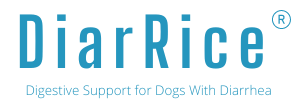Giardia in Dogs: Symptoms, Treatment, and Prevention Guide
Giardia in dogs is a common health issue that can be both concerning and confusing for pet owners.

The primary symptoms include watery diarrhea, nausea, and abdominal pain.
These signs can escalate quickly, making it essential for you to understand how to recognize and address this condition.
Dogs, especially younger ones or those with weakened immune systems, may not always show symptoms right away, so staying informed is crucial.
Treating Giardia involves using anti-parasitic medications and making sure your dog’s environment is clean to prevent reinfection.
Working with your veterinarian ensures you get the right treatment plan, which may include drugs like Metronidazole or Fenbendazole.
Consistent cleaning and good hygiene practices are key components of effectively managing and preventing giardiasis.
Prevention is better than cure when it comes to Giardia. Ensuring your dog avoids contaminated water sources and maintaining a clean living area can help you keep your furry friend healthy.
Regular vet check-ups and keeping an eye on any changes in your dog’s behavior or stool can help catch Giardia early and treat it promptly.
Key Takeaways
- Giardia in dogs causes diarrhea, nausea, and pain.
- Treatment involves anti-parasitic medications and a clean environment.
- Prevention relies on avoiding contaminated water and maintaining cleanliness.
Understanding Giardia in Dogs
Giardia is a common parasite that affects dogs, causing symptoms like diarrhea and stomach discomfort. Recognizing the lifecycle of the parasite, identifying symptoms, and conducting proper tests are key to managing giardiasis.
Lifecycle of the Giardia Parasite
Giardia lives in two forms: cysts and trophozoites.
Cysts are the infectious form found in contaminated water or feces. When a dog ingests cysts, they release trophozoites in the intestines.
Trophozoites attach to the intestinal wall, causing damage and producing more cysts. The cysts exit the dog’s body through feces, ready to infect other animals. This cycle continues, spreading the parasite further.
Effective prevention involves avoiding contaminated water sources and promptly cleaning up after your dog.
Signs and Symptoms of Giardiasis
Infected dogs often show symptoms like diarrhea and weight loss. You may notice your dog’s feces is watery or has a strong odor.
Some dogs may also experience nausea and abdominal pain.
Not all dogs show symptoms, making it harder to detect. Young dogs and those with weak immune systems are more likely to show signs.
Watch for changes in your dog’s stool and overall behavior. Early detection can help prevent serious health issues.
Diagnosing Giardia in Dogs
Diagnosing giardia involves testing a stool sample for the parasite.
Vets use tests like fecal flotation to spot cysts. Another common method is the ELISA test, which detects giardia proteins.
It’s important to follow your vet’s guidance for collecting and submitting a stool sample. Sometimes, multiple samples might be needed to confirm the diagnosis.
Timely and accurate diagnosis is crucial for effective treatment, ensuring your dog gets the care it needs.
For more details on symptoms and tests, visit this Giardia in dogs page or learn about the specifics of giardiasis in this Veterinary Practice guide.
Treating Giardia in Canines
Treating Giardia in dogs involves specific medications, supportive care, and regular monitoring. Each of these steps is crucial to ensure the health and recovery of your pet.
Medication Options
Two commonly used medications to treat Giardia in dogs are fenbendazole and metronidazole. These drugs target the Giardia parasites in the intestines.
- Fenbendazole: Often prescribed for three to ten days, this medication helps kill the parasite.
- Metronidazole: Typically given for five to seven days, it acts as both an antiprotozoal and antibiotic.
Your veterinarian will determine the appropriate medication and dosage based on your dog’s age, weight, and health status. Always follow the prescription’s instructions carefully to ensure complete treatment.
Supportive Care and Diet
Supportive care involves managing symptoms like dehydration, which is common due to diarrhea.
Ensure your dog has access to plenty of fresh water.
- Hydration: To prevent dehydration, consider giving oral rehydration solutions or fluids recommended by your vet.
- Diet: A bland diet can help ease digestive upset. Foods like boiled chicken and rice are often suggested. Ask your vet for specific dietary recommendations tailored to your dog’s needs.
Probiotics such as DiarRice may also be beneficial to restore healthy gut bacteria and improve digestion. These can be found in specialized dog foods or supplements.
Monitoring and Follow-Up
Regular follow-up visits to the vet are essential.
Your vet will start by rechecking your dog’s stool to ensure the Giardia has been eradicated.
- Follow-Up Exams: These exams may occur a few weeks after treatment.
- Observation: Continue to observe your dog for any lingering symptoms. Symptoms like diarrhea, vomiting, or weight loss should be reported to your vet immediately.
It’s also important to keep your dog clean and maintain hygiene.
Bathing your dog at the end of the treatment can help remove any remaining Giardia cysts from their fur. This reduces the chance of reinfection.
Preventing Giardia Infections
Effective prevention of Giardia infections in dogs requires careful attention to environmental management and maintaining good hygiene and routine care. Following the steps outlined below can help keep your dog safe from this parasite.
Environmental Management
Ensure that your dog’s environment is kept as clean as possible.
Clean and disinfect areas where your dog spends time, especially kennels and sleeping areas. Use disinfectants that are effective against Giardia cysts.
Keep your yard clean by promptly picking up and disposing of dog poop. This reduces the risk of your dog coming into contact with contaminated feces.
Be cautious when taking your dog to public places such as parks or trails, where contaminated water or soil can be a risk.
Regularly wash your dog’s bedding and toys. If your dog has been diagnosed with Giardia, you may need to replace these items to prevent reinfection.
Filter and disinfect any water sources your dog drinks from, especially when traveling or hiking.
Hygiene and Routine Care
Good hygiene practices are crucial in preventing Giardia infections.
Wash your hands thoroughly after handling your pet, pet waste, or their food and water bowls. Encourage all family members to follow this practice to minimize the spread of the parasite.
Bathe your dog regularly to remove any Giardia cysts from their fur. Pay attention to their paws, as they can easily pick up and spread the parasite.
Keep your dog’s drinking water clean by regularly washing their water bowl and avoiding stagnant water sources.
Inspect your dog regularly for signs of infection, such as diarrhea or lethargy.
If you suspect your dog has contracted Giardia, consult your vet immediately. Prompt treatment and maintaining routine vet visits are essential in managing your dog’s health and avoiding future infections.
Considerations for Specific Dog Populations
Certain dog populations are more vulnerable to Giardia infections, including puppies and dogs with weakened immune systems. Attention to their unique needs is essential for preventing and treating this condition effectively.
Puppies and Young Dogs
Puppies and younger animals are at a higher risk of Giardia infections. Their immature immune systems struggle to fight off the parasite.
Diarrhea, weight loss, and malodorous feces are common symptoms in young dogs. These clinical signs can lead to dehydration and malnutrition if not addressed promptly.
It is critical to monitor puppies for signs of Giardia.
Regular vet visits and stool tests can help in early detection. Proper hygiene in their living environment reduces the risk of infection. Cleaning bedding and feeding areas prevents the spread of the parasite.
Administering prescribed anti-parasitic medications is essential.
Young dogs need early treatment to prevent reinfection.
Socializing puppies should be done cautiously, especially in places like dog parks where the parasite is common. Careful attention to these factors can help manage and prevent Giardia in puppies and young dogs.
Dogs with Weakened Immune Systems
Dogs with weakened immune systems are more likely to suffer from Giardia infections.
These animals often show more severe symptoms due to their bodies’ reduced ability to fight off the parasite.
Symptoms can include chronic diarrhea, weight loss, and abdominal pain.
In some cases, dogs may appear asymptomatic but still carry the infection, posing a risk of reinfection and spreading the parasite to others.
Managing Giardia in these dogs involves maintaining a clean environment.
Regular cleaning of their living areas reduces exposure to Giardia cysts.
Administering prescribed anti-parasitic medications is crucial, and the dog’s condition should be closely monitored to ensure the treatment’s effectiveness.
In addition, these dogs may require longer or repeated treatment courses.
Preventing exposure to contaminated water and environments is vital. Avoiding dog parks and other high-risk areas helps minimize the risk of reinfection.
Frequently Asked Questions
Giardia is a parasite that affects dogs’ gastrointestinal tracts. Understanding symptoms, treatment, and prevention can help manage this condition effectively. Here are some common questions about Giardia in dogs.
What are the common symptoms of Giardia in dogs?
Dogs infected with Giardia often experience diarrhea. This can range from soft and crumbly to watery. Other symptoms include dehydration, nausea, abdominal pain, and weight loss. You may also notice your dog showing signs of discomfort, such as low growling or writhing.
How can Giardia in dogs be treated effectively?
Treatment for Giardia usually involves medication. Vets commonly prescribe fenbendazole and metronidazole, sometimes using them together. These drugs help to eliminate the parasite from your dog’s system. Even if your dog shows no symptoms, a vet visit is essential for a proper diagnosis.
What steps can be taken to prevent Giardia infection in dogs?
Prevention includes keeping your dog away from contaminated water, soil, and food. Regularly clean your dog’s living environment. In high-density settings like kennels, ensure proper hygiene practices are followed. Always provide fresh, clean water for your dog to drink.
What dietary considerations should be taken for a dog infected with Giardia?
When your dog has Giardia, keep their diet bland and easy to digest. Avoid rich, fatty foods and consult your vet about suitable options. In some cases, special veterinary diets can help manage symptoms and prevent further irritation of the gastrointestinal tract.
How can a dog become infected with Giardia?
Dogs commonly get Giardia by ingesting contaminated water, food, or soil. The parasite is often found in areas with fecal contamination. High-density environments like kennels can also pose a higher risk for transmission due to close contact with infected animals.
How long is a dog contagious after being infected with Giardia?
Giardia is contagious until it is treated and cleared from the dog’s system.
This usually takes a couple of weeks with proper medication. Multiple negative tests are often necessary to confirm that the infection is completely gone.
Always follow your vet’s advice on when it’s safe for your dog to interact with other animals again.
